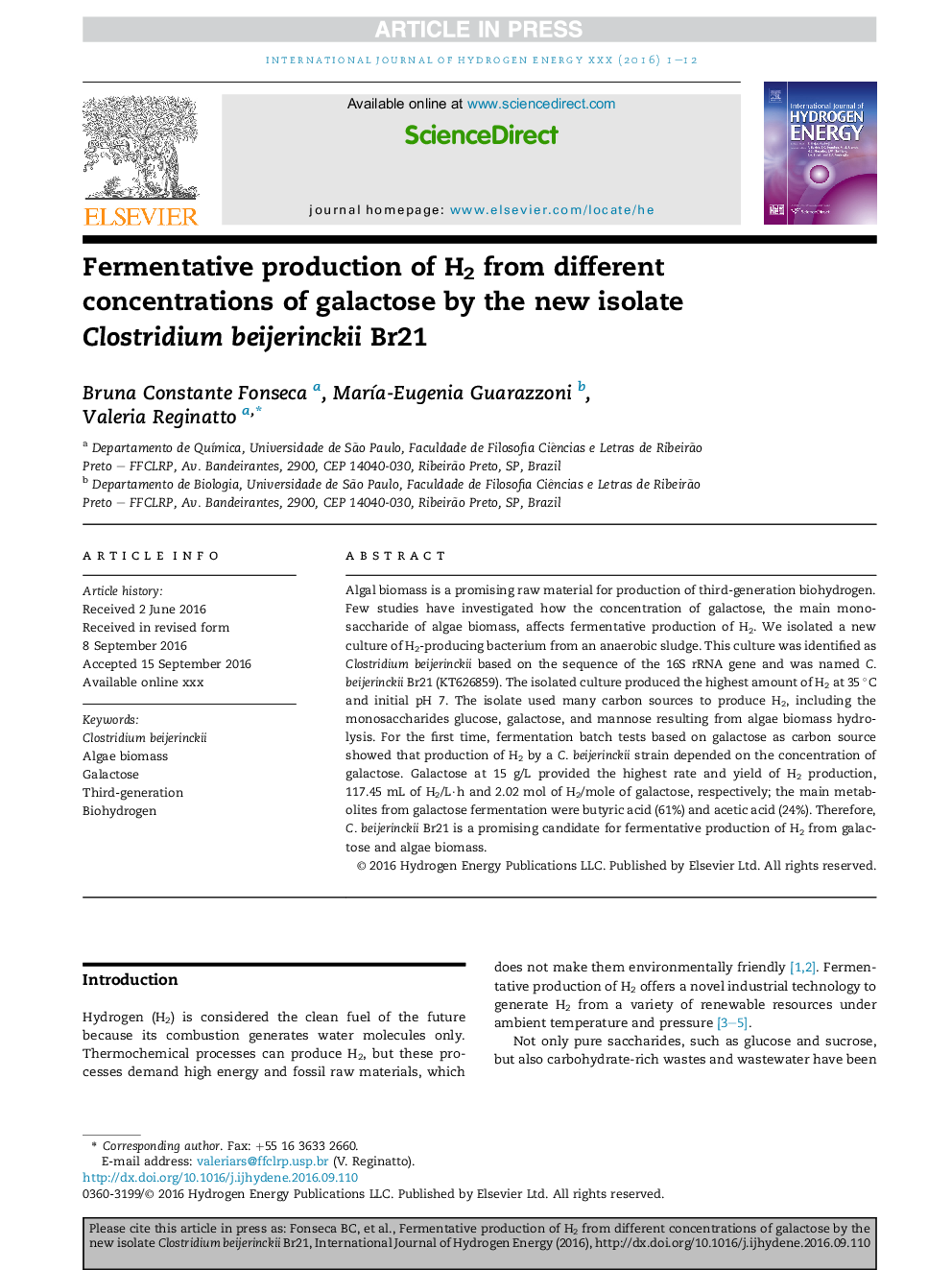| Article ID | Journal | Published Year | Pages | File Type |
|---|---|---|---|---|
| 5146860 | International Journal of Hydrogen Energy | 2016 | 12 Pages |
Abstract
Algal biomass is a promising raw material for production of third-generation biohydrogen. Few studies have investigated how the concentration of galactose, the main monosaccharide of algae biomass, affects fermentative production of H2. We isolated a new culture of H2-producing bacterium from an anaerobic sludge. This culture was identified as Clostridium beijerinckii based on the sequence of the 16S rRNA gene and was named C. beijerinckii Br21 (KT626859). The isolated culture produced the highest amount of H2 at 35 °C and initial pH 7. The isolate used many carbon sources to produce H2, including the monosaccharides glucose, galactose, and mannose resulting from algae biomass hydrolysis. For the first time, fermentation batch tests based on galactose as carbon source showed that production of H2 by a C. beijerinckii strain depended on the concentration of galactose. Galactose at 15 g/L provided the highest rate and yield of H2 production, 117.45 mL of H2/L·h and 2.02 mol of H2/mole of galactose, respectively; the main metabolites from galactose fermentation were butyric acid (61%) and acetic acid (24%). Therefore, C. beijerinckii Br21 is a promising candidate for fermentative production of H2 from galactose and algae biomass.
Related Topics
Physical Sciences and Engineering
Chemistry
Electrochemistry
Authors
Bruna Constante Fonseca, MarÃa-Eugenia Guazzaroni, Valeria Reginatto,
